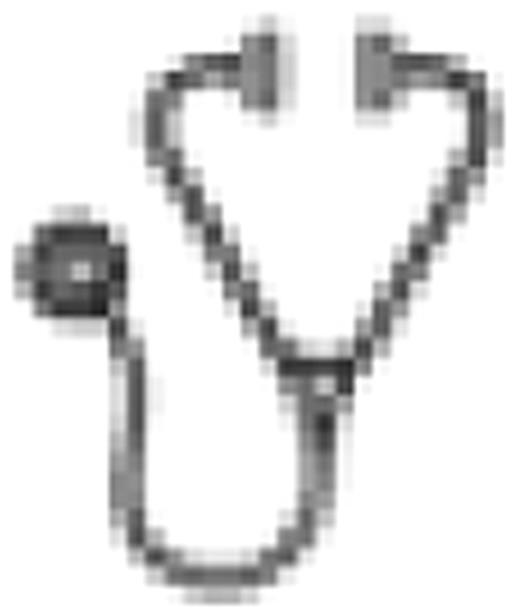Abstract
Abstract 3438
The standard of care for most patients (pts) with CML has been imatinib mesylate at a dose of 400mg by mouth daily. Earlier studies have suggested that there may be a benefit to pts to start treatment at a higher dose as this may result in faster and more durable responses to imatinib. It is not yet known whether long-term event-free survival (EFS), transformation-free survival (TFS), and overall survival (OS) will be impacted by the higher dosing schedule.
To determine the long term responses and clinical benefit of imatinib 800mg daily versus 400mg daily dosing when used as upfront treatment strategy in CML.
We conducted sequential prospective trials using imatinib 400mg or 800mg daily as initial therapy for patients with previously untreated chronic phase CML.
A total of 281 pts were included in these trials: 208 treated with 800mg and 73 with 400mg. The median follow-up for each group was 79 months (range: 3–107) and 110 months (range: 2–116). The overall, cumulative rate of complete cytogenetic response (CCyR) was 91% and 87%, respectively (p=0.49) for those treated with high- and standard-dose, and the cumulative rate of major molecular response (MMR) was 87% and 78%, respectively (p=0.06). Rates of CCyR at 12 months were 90% and 66%, respectively (p < 0.001), and MMR at 18 months 82% and 68%, respectively (p=0.04). A significantly better EFS (definition per IRIS criteria) was observed for the 800 mg group compared to that in the 400mg group (log-rank test, p=0.049; estimated 7-year EFS 86% vs 76% by Kaplan-Meier method). No significant differences were seen for survival free from transformation to accelerated and blast phase (p = 0.46) and overall survival (p = 0.27). For OS, thus far 19 pts in the 800mg group have died (2 probable CML-related, 3 unknown causes, 14 non CML related) compared to 13 pts (10 probable CML-related, 3 non CML-related) in the 400mg group. The table below shows the annual rate of events and transformation for each dose group.
| Actual . | . | no. at risk . | no. event . | event yearly % . | no. transformation . | yearly % . |
|---|---|---|---|---|---|---|
| 400 mg | 1-yr | 73 | 5 | 7 | 4 | 5 |
| 2-yr | 62 | 4 | 6 | 2 | 3 | |
| 3-yr | 54 | 1 | 2 | 1 | 2 | |
| 4-yr | 51 | 1 | 2 | 1 | 2 | |
| 5-yr | 50 | 0 | 0 | 0 | 0 | |
| 6-yr | 48 | 2 | 4 | 0 | 0 | |
| 7-yr | 44 | 2 | 4 | 0 | ||
| no event occurred after the 7yr | ||||||
| 800 mg | 1-yr | 208 | 4 | 2 | 3 | 1 |
| 2-yr | 184 | 6 | 3 | 2 | 1 | |
| 3-yr | 166 | 4 | 2 | 3 | 2 | |
| 4-yr | 156 | 3 | 2 | 2 | 1 | |
| 5-yr | 146 | 2 | 1 | 2 | 0.7 | |
| 6-yr | 128 | 1 | 1 | 1 | 0.8 | |
| 7-yr | 97 | 2 | 2 | 2 | 2 | |
| no event occurred after the 7yr | no transformation occurred after the 7yr | |||||
| Actual . | . | no. at risk . | no. event . | event yearly % . | no. transformation . | yearly % . |
|---|---|---|---|---|---|---|
| 400 mg | 1-yr | 73 | 5 | 7 | 4 | 5 |
| 2-yr | 62 | 4 | 6 | 2 | 3 | |
| 3-yr | 54 | 1 | 2 | 1 | 2 | |
| 4-yr | 51 | 1 | 2 | 1 | 2 | |
| 5-yr | 50 | 0 | 0 | 0 | 0 | |
| 6-yr | 48 | 2 | 4 | 0 | 0 | |
| 7-yr | 44 | 2 | 4 | 0 | ||
| no event occurred after the 7yr | ||||||
| 800 mg | 1-yr | 208 | 4 | 2 | 3 | 1 |
| 2-yr | 184 | 6 | 3 | 2 | 1 | |
| 3-yr | 166 | 4 | 2 | 3 | 2 | |
| 4-yr | 156 | 3 | 2 | 2 | 1 | |
| 5-yr | 146 | 2 | 1 | 2 | 0.7 | |
| 6-yr | 128 | 1 | 1 | 1 | 0.8 | |
| 7-yr | 97 | 2 | 2 | 2 | 2 | |
| no event occurred after the 7yr | no transformation occurred after the 7yr | |||||
Treatment discontinuation for toxicity occurred in 16 (8%) pts treated with 800mg and 6 (8%) pts treated with 400mg.
At 7-year follow up, pts treated with 800mg demonstrated a significantly better EFS (by IRIS criteria) compared to those treated with 400mg. There is a trend for a lower annual rate of events and transformation with the higher dose, particualry in the earlier years, but no difference in OS. These results suggest a modest benefit for patients treated with higher dose imatinib.
Off Label Use: imatinib at dose of 800mg po daily for CML. Kantarjian:BMS, Pfizer and Novartis: Research Funding; Novartis: Consultancy. Verstovsek:Incyte Corporation: Research Funding. Ravandi:Bristol Myers Squibb: Honoraria, Research Funding; Novartis: Honoraria, Speakers Bureau. Cortes:Pfizer: Consultancy, Research Funding; BMS: Honoraria, Research Funding; Novarits: Honoraria, Research Funding.

This icon denotes an abstract that is clinically relevant.
Author notes
Asterisk with author names denotes non-ASH members.

This feature is available to Subscribers Only
Sign In or Create an Account Close Modal